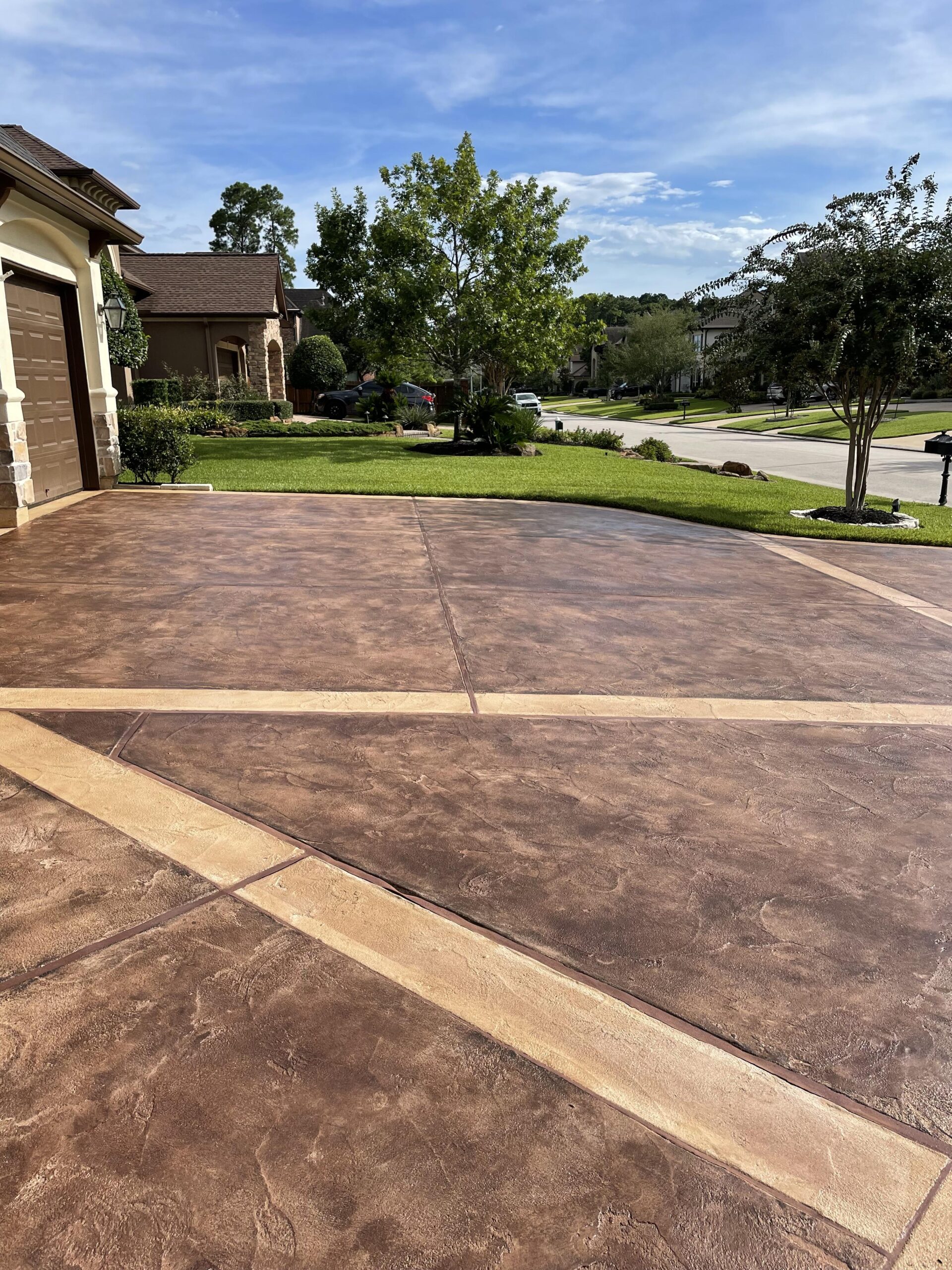Discover Legendary Concrete Brentwood: Unmatched Quality and Solution
Discover Legendary Concrete Brentwood: Unmatched Quality and Solution
Blog Article
The Green Selection: Concrete Sidewalks for Your Area
Concrete pathways are an ubiquitous feature in a lot of communities, yet their impact on the setting is commonly forgotten. Choosing concrete for your area sidewalks can make a considerable difference in terms of sustainability and eco-friendliness. The advantages of choosing concrete surpass simple aesthetic appeals and capability. By thinking about the environmental advantages and long-term impacts on the community, the option of products for sidewalks comes to be an important choice. Let's discover why concrete sidewalks may be the environment-friendly choice your community requires.
Benefits of Concrete Sidewalks
When taking into consideration the installation of pathways in a neighborhood, the benefits of selecting concrete over various other materials are substantial and numerous. Concrete sidewalks provide sturdiness, withstanding heavy foot web traffic, weather condition variations, and ecological components better than alternative materials like asphalt or crushed rock. This long life translates to cost-effectiveness over time, as concrete pathways call for less regular fixings and upkeep. In addition, concrete is a flexible material that can be conveniently tailored to complement the aesthetic of any neighborhood through various finishes, colors, and patterns.

Longevity and Durability
Just how can concrete sidewalks outshine various other materials in regards to durability and durability? Concrete pathways are renowned for their extraordinary longevity and longevity compared to different products like asphalt or pavers. The inherent strength of concrete makes it highly resistant to fracturing, changing, and general deterioration created by foot traffic, weather condition changes, and various other ecological variables. Unlike asphalt, which can soften in high temperatures and fracture in cold problems, concrete keeps its architectural honesty, requiring minimal maintenance in time.
Furthermore, concrete's resilience reduces the demand for regular repair work or replacements, making it a affordable and sustainable option for area walkways. By investing in concrete walkways, communities can take pleasure in a lasting and reliable framework that enhances the total aesthetic charm and functionality of the area.
Reduced Maintenance Demands
Concrete pathways stand out for their minimal upkeep demands due to their long lasting nature and durable performance. Unlike alternative materials that may need constant repairs or replacements, concrete sidewalks use a cost-efficient service that requires little upkeep over time.
Regular upkeep for concrete pathways usually includes basic jobs such as routine cleaning to eliminate particles and periodic securing to secure the surface. In comparison to materials like asphalt or pavers that may shift, crack, or degrade more conveniently, concrete pathways preserve their architectural stability with very little intervention. Furthermore, any repairs that may be required are generally local and can be addressed promptly, lowering both the time and expense connected with upkeep.

Environmental Advantages
With an emphasis on sustainability and eco-friendliness, concrete pathways use significant environmental advantages that add to a greener community facilities. Concrete is a material understood for its longevity and longevity, decreasing the need for frequent substitutes. This durability decreases the ecological effect linked with the manufacturing and transport of new materials for pathway building. Additionally, concrete pathways have a high solar reflectance index, indicating they reflect a significant quantity of sunlight rather than taking in and retaining warmth. This quality aids why not find out more reduce the urban warm island effect, lowering power consumption for cooling down structures and enhancing total convenience in urban locations.
Additionally, concrete is a permeable product that enables water to penetrate right into the ground, reducing stormwater runoff and helping in groundwater recharge. This assists stop disintegration, decrease flooding, and keep the all-natural equilibrium of water supply in the neighborhood. By choosing concrete sidewalks, communities can make a sustainable choice that positively impacts the environment and enhances the quality of life for locals.
Enhancing Community Sustainability
By prioritizing sustainable infrastructure solutions, neighborhoods can cultivate an unified equilibrium in between ecological consciousness and neighborhood advancement. Enhancing neighborhood sustainability involves a multifaceted approach that goes beyond simply the ecological advantages of concrete walkways. Executing green spaces, advertising energy-efficient techniques, and promoting a sense of community involvement are crucial parts of producing a sustainable neighborhood.
One way to boost area sustainability is via the combination of permeable concrete sidewalks. These sidewalks permit rain to leak right into the ground, minimizing stormwater overflow and minimizing the pressure on local drain systems. Concrete Contractor. By incorporating absorptive sidewalks, areas can boost water quality, reduce flooding threats, and improve overall environmental strength
In addition, promoting different transport methods such as strolling and cycling can significantly minimize carbon emissions and advertise a healthier way of living among homeowners. Producing secure pedestrian paths, bike lanes, and designated greenways can urge locals to count less on vehicles, better contributing to the area's sustainability goals.
Verdict
Finally, concrete walkways offer countless benefits for neighborhoods, consisting of toughness, reduced maintenance demands, and ecological advantages. By selecting concrete pathways, communities can improve her response their sustainability and add to an extra environment-friendly setting. It is clear that concrete sidewalks are the optimal selection for neighborhoods wanting to boost their framework in a lasting and eco-friendly fashion.
When considering the installation of pathways in a neighborhood, the benefits of choosing concrete over other materials are substantial and countless. In addition, concrete's resilience minimizes the requirement for regular fixings or substitutes, making it a cost-effective and lasting selection for area walkways (Legendary Concrete Brentwood).With an emphasis on sustainability and eco-friendliness, concrete pathways use remarkable ecological advantages that contribute to a greener neighborhood infrastructure. Enhancing neighborhood sustainability involves a complex approach that goes beyond simply the ecological advantages of concrete walkways.In conclusion, concrete sidewalks supply many best site benefits for neighborhoods, including durability, reduced maintenance requirements, and environmental benefits
Report this page